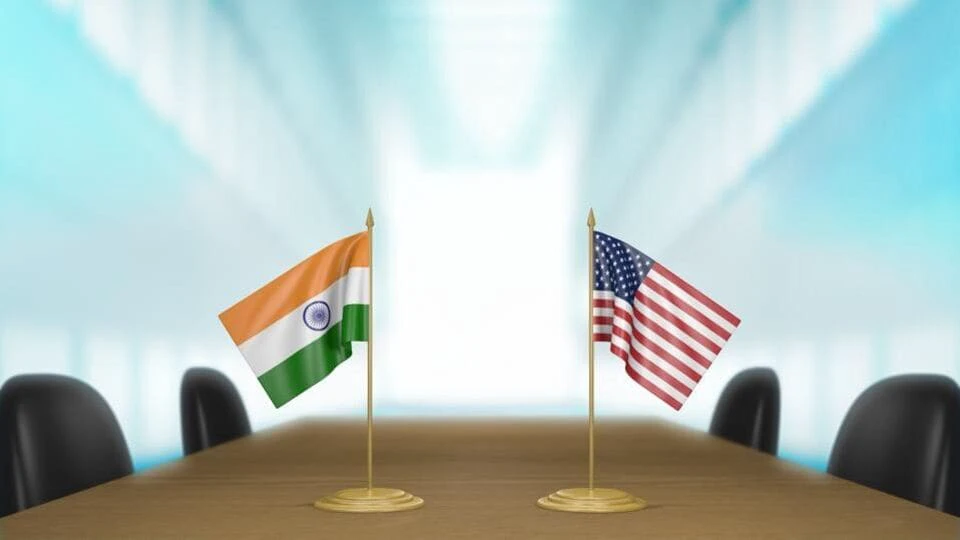New Delhi: With the 2025 fall deadline for the India-US bilateral trade agreement (BTA) approaching, the two sides have intensified activity to bridge differences on key issues such as tariffs, digital trade, and agricultural access to flesh out what officials describe as a “mutually beneficial” deal, two people familiar with the matter said.
Commerce secretary Rajesh Agarwal is likely to lead a high-level delegation to Washington this week, just ahead of Diwali, to work through the remaining gaps, a senior government official said.
Agarwal, who took charge on 1 October after serving as India’s chief negotiator, will be joined by Darpan Jain, joint secretary in the commerce ministry and B.M. Mishra, director in the same department, among others.
The deal is about balancing the interests of both sides, with each trying to push its own priorities, the official said, without divulging any other critical issues apart from the red lines drawn by India on opening market access for American farm and dairy products.
“The talks have progressed positively in recent weeks, with both governments showing readiness to bridge differences and finalize the agreement. There is strong political will on both sides to close the negotiations soon. The discussions have been moving in a constructive direction,” the official added.
The upcoming visit follows a meeting between the US ambassador Sergio Gor and commerce secretary Rajesh Agarwal in New Delhi on Sunday, where the two reviewed bilateral economic ties and India’s investment commitments in the US amid Washington’s push to expand domestic manufacturing under the Make in America initiative.
A day earlier, Gor held separate meetings with prime minister Narendra Modi, external affairs minister S. Jaishankar, national security adviser Ajit Doval and foreign secretary Vikram Misri.
Gor has not yet met commerce minister Piyush Goyal.
Digital trade
According to the second person in the know, the pending points of contention relate to tariff adjustments on certain industrial goods, agricultural access, and the treatment of digital trade and data flow provisions.
The Indian delegation’s visit to Washington is expected to focus on resolving these issues to pave the way for an agreement before the end of November, the fall 2025 deadline highlighted in the joint statement issued by the two countries on 13 February, when Prime Minister Narendra Modi had visited Washington.
The two sides have held five rounds of face-to-face talks so far. It is not yet clear whether this will be treated as the resumption of the sixth round of talks, which was put on hold after the US negotiating team cancelled its visit scheduled for 25 August. The discussions are also expected to finalize the way forward for concluding the agreement.
As reported by Mint on 25 September, Washington DC has set a strong condition for India to reduce its oil purchases from Russia and increase imports from the US as a prerequisite to finalizing the trade deal. From 27 August, the Donald Trump administration imposed an additional 25% tariff on Indian exports as a penalty for Russian oil purchases, raising the total tariff to 50%, the highest among all its trading partners, barring Brazil.
To a query on the US demands related to the Russian oil issue, the first person cited above was non-committal and said the matter was not being handled by the commerce ministry.
New Delhi is seeking to buy more natural gas from the US as part of the ongoing trade talks, said the second person familiar with the development.
Market access
As reported by Mint on 13 October, US trade negotiators also want India to allow online marketplaces-such as Amazon India and Walmart-owned Flipkart-to stock and sell their own goods, seeking a policy change that could reshape India’s online retailing.
India bars foreign-owned online retailers from holding inventory, prompting them to source goods from a large network of vendors. Locally-funded online retailers such as Bigbasket, Ajio and Nykaa hold and sell their own goods. The change, if approved, could heighten competition in the marketplace.
Queries sent to the commerce ministry remained unanswered till press time.
Talks on the India-US BTA resumed on 16 September, after a month-long pause over India’s red lines on agriculture, dairy, and genetically-modified crops.
India’s exports to the US rose 18% to $40.35 billion during April-August, while imports grew 8.5% to $21.61 billion. This took the total bilateral trade to $61.96 billion during the five-month period, up 14.5% from $54.12 billion a year ago.
“India must approach these negotiations with caution and clarity,” said Ajay Srivastava, co-founder of the Global Trade Research Initiative (GTRI). “With China, the US has shown that trade deals can be rewritten overnight. The so-called ‘Phase One’ deal was followed by fresh 100% tariffs within months. India should learn from that experience and insist on genuine reciprocity and long-term predictability.”
He, however added that strengthening domestic capacity in technology, minerals and manufacturing will give India “the resilience and leverage to manage any future trade shocks”.
